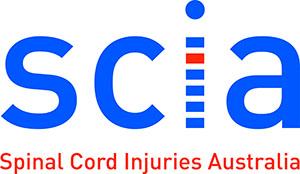Researchers at the University of Wollongong (UOW) led ARC Research Hub for Australian Steel Manufacturing have been investigating self-cleaning, anti-microbial organic coatings for painted sheet steel to prevent the build-up of mould, algae and other bacteria on coated steel products, particularly in humid environments.
Left unchecked, a build-up of troublesome organisms wreaks havoc on steel products, requiring more regular and costly cleaning and maintenance.
In the marine industry, for example, algal growth can stick to boat and ship hulls, resulting in decreased speed and manoeuvrability as well as increasing fuel consumption.
In hospitals, bacterial contamination of surfaces such as countertops, surgical tools, and medical devices contributes to the spread of potentially deadly hospital-acquired infections.
Current solutions have been based on coatings that incorporate biocides, which release antimicrobial agents to kill target microorganisms.
Yet, the effectiveness of biocides is dulled over time and eventually rendered ineffective.
Many biocides are made with toxic chemical that can have detrimental environmental effects and are often limited in application by health, safety and environmental regulations.
Researchers at the Intelligent Polymer Research Institute (IPRI), in collaboration with Steel Hub partner BlueScope, set about investigating a more effective and environmentally friendly coating solution.
Instead of directly targeting microorganisms, the researchers looked at developing a coating that prevented them attaching to a surface in the first place.
They combined silica nanoparticles with chemical compounds called zwitterions, which are naturally hydrophilic, or able to bond to water.
Silica nanoparticles have already been added to paints for their abrasion resistance and flame-retardant properties, as well as being low cost and easily produced in large quantity.
The zwitterions are able to bond to the nanoparticles, which in turn, are more readily attached to a surface to form a water layer or coating.

A diagram of the non-stick surface coating using silica-nanoparticles.
“This water layer actually forms a barrier, preventing interactions with proteins, which are often a precursor to organism attachment and subsequent biofouling,” PhD student Brianna Knowles said.
“Microorganisms can’t displace the bound water and so they’re not able to form an attachment to the surface.
“Hydrophilic coatings also don’t pose the risk of environmental contamination and don’t promote the emergence of biocide or antibiotic-resistant organisms.”
In lab tests, the particle coatings showed an 87 per cent reduction in adhesion of microbial spores and a 96 per cent reduction in bacteria (Escherichia coli).
These results indicate the potential for the silica nanoparticles to be further developed as versatile fouling-resistant coatings for widespread coating applications.
“The technology currently is as a surface coating that can be easily applied to a range of surfaces,” research supervisor Dr Paul Molino said.
“At this stage, it could be coated directly onto an existing surface to provide fouling protection but further work could be devoted to trying to incorporate nanoparticles with hydrophilic chemistries into paints.
“We are looking at optimising this fouling resistant coating system by investigating the influence of varying the size of the modified silica nanoparticles on the adhesion of different microbial organisms, as well as investigating the modification of the silica nanoparticles with some new chemistries, with preliminary results identifying some exciting results.”
Project leader Associate Professor Michael Higgins said: “The success of ARC research hubs are critical in providing industries such as BlueScope with access to the latest cutting-edge advances in coating technologies, while also training future leaders in the industry sector.”
The research was published recently in the journal Applied Material and Interfaces.


































































































